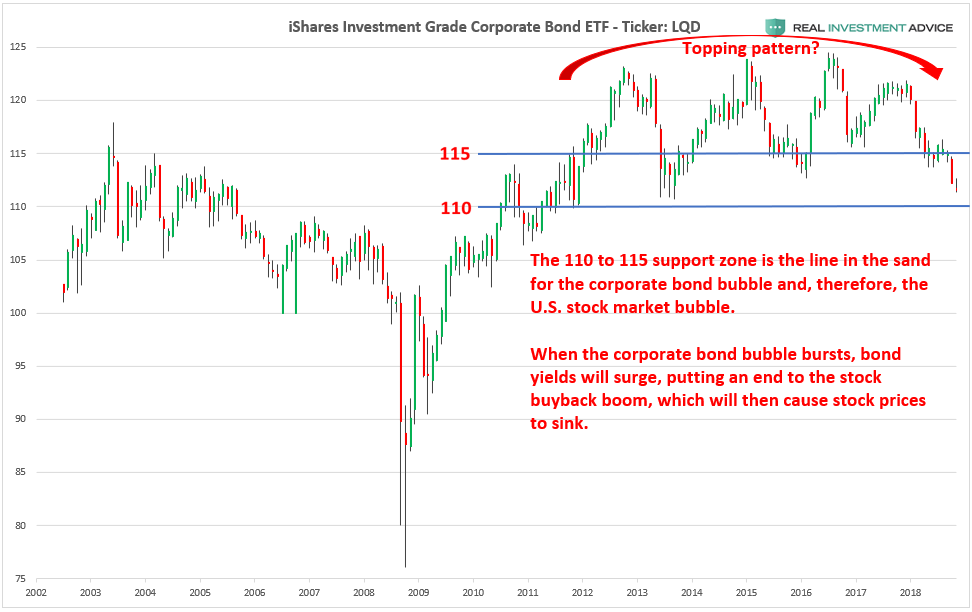“People often ask me how and when I foresee the U.S. corporate debt bubble bursting and the answer is quite simple: the U.S. corporate debt bubble will likely burst due to tightening monetary conditions, including rising interest rates.
simple: the U.S. corporate debt bubble will likely burst due to tightening monetary conditions, including rising interest rates.
- Loose monetary conditions are what created the corporate debt bubble in the first place, so the ending of those conditions will end the corporate debt bubble.
- Falling corporate bond prices and higher corporate bond yields will cause stock buybacks to come to a screeching halt, which will also pop the stock market bubble, creating a downward spiral.
There are extreme consequences from central bank market-meddling and we are about to learn this lesson once again.”
Prepared by Lorimer Wilson, editor of munKNEE.com – Your KEY To Making Money!
[This article of edited excerpts* (302 words) from the original article (468 words) by Jesse Colombo provides you with a 35% FASTER – and EASIER – read. Please note: This complete paragraph, and a link back to the original article, must be included in any article re-posting to avoid copyright infringement.]
“Interestingly, Zero Hedge tweeted a chart today of the LQD iShares Investment Grade Corporate Bond ETF saying that it was “about to break 7-year support: below it, the buybacks end.” That chart resonated with me because it echoes my warnings from a few months ago. I decided to recreate this chart with my own commentary on it.
- The 110 to 115 support zone is the key line in the sand to watch.
- If LQD closes below this zone in a convincing manner, it would likely foreshadow an even more powerful bond and stock market bust ahead.
(Click on image to enlarge)

Thanks to ultra-low corporate bond yields, U.S. corporations have engaged in a borrowing binge since the Global Financial Crisis. Total outstanding non-financial U.S. corporate debt is up by an incredible $2.5 trillion or 40% since its 2008 peak, which was already a precariously high level, to begin with and is now at an all-time high of over 45% of GDP, which is even worse than the levels reached during the dot-com bubble and U.S. housing and credit bubble:
(Click on image to enlarge)

Conclusion
Anyone who thinks that the Fed can distort the credit markets for so long without terrible consequences is extremely naïve and will be taught a lesson in the days to come.”
Want your very own financial site? #munKNEE.com is being given away – check it out!
(*The author’s views and conclusions are unaltered and no personal comments have been included to maintain the integrity of the original article. Furthermore, the views, conclusions and any recommendations offered in this article are not to be construed as an endorsement of such by the editor.)
For the latest – and most informative – financial articles sign up (in the top right corner) for your FREE bi-weekly Market Intelligence Report newsletter (see sample here).
Scroll to very bottom of page & add your comments on this article. We want to share what you have to say!
If you enjoyed reading the above article please hit the “Like” button, and if you’d like to be notified of future articles, hit that “Follow” link.
 munKNEE.com Your Key to Making Money
munKNEE.com Your Key to Making Money